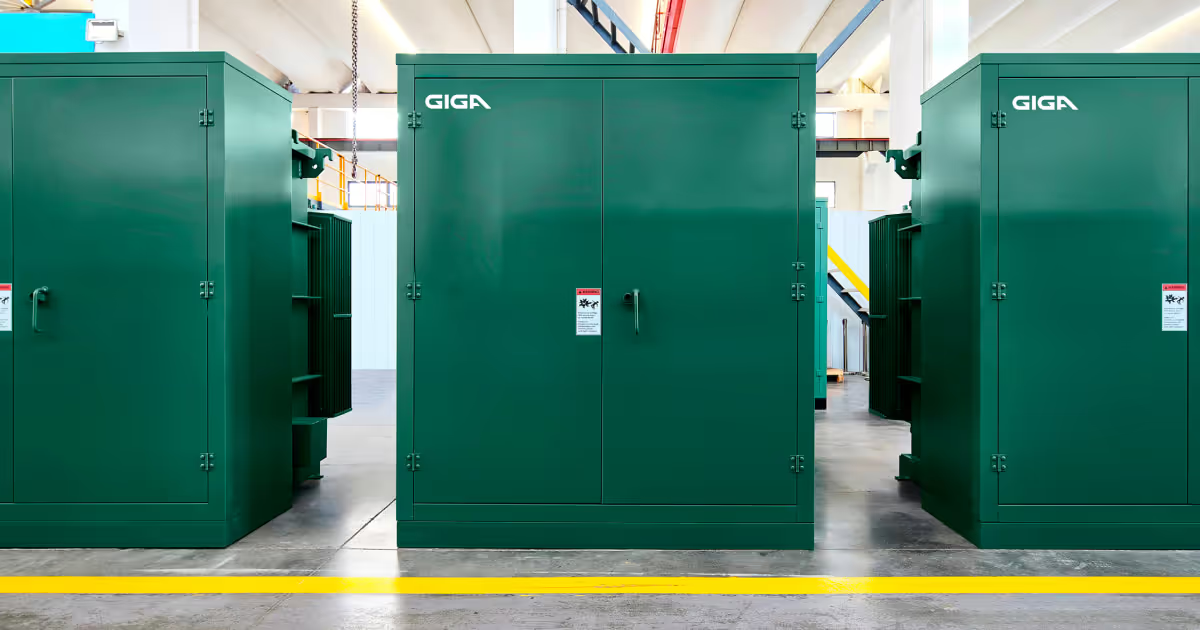This post will be updated as policy shifts. Last updated: July 3, 2025. Final voting is scheduled today at 1:30PM EDT.
Safe harbor provisions have been quietly critical for navigating energy compliance, but new federal legislation is reshaping how buyers must plan and act.
With the House passing the One Big Beautiful Bill Act (OBBBA) in May and the Senate’s proposed amendments in June, compliance requirements have shifted, timelines have compressed, and the stakes for getting it right have never been higher.
This guide breaks down what compliance-minded buyers need to know now and outlines how Giga is building trust and transparency in this rapidly evolving landscape.
What Are Safe Harbor Energy Regulations?
Safe harbor provisions are legal carveouts designed to shield companies from penalties when specific regulatory conditions are met. In the energy sector, this traditionally gave buyers and vendors breathing room to transition between evolving rules — especially for equipment like transformers, switchboards, or other grid infrastructure.
Historically, these clauses helped protect:
- Purchase orders made before a rule took effect
- Equipment manufactured and shipped within a compliant window
- Buyers from being retroactively penalized when standards changed mid-project
These protections still exist — but they now come with tighter windows, new tax implications, and increased scrutiny on foreign sourcing.
What’s New Under the One Big Beautiful Bill Act and Senate Amendments?
Passed in May 2025, the House version of the OBBBA introduced a 60-day window for construction commencement and a December 31, 2028, in-service deadline to qualify for clean energy tax credits. However, the Senate version, introduced in June, significantly modifies that framework.
1. Shift from In-Service to Construction Start Dates
The Senate version replaces the in-service cutoff with a construction start timeline. Projects must begin construction by:
- 2025 to receive 100% of the tax credit
- 2026 for 60%
- 2027 for 20%
- 2028 or later projects are ineligible
This phase-out structure creates urgency for developers and reduces reliance on final commissioning timelines. This topic is still being ammended up until the final vote today. We will update these dates and percentages as soon as the bill is passed.
2. Excise Tax on Chinese Components
A new Senate provision introduces an excise tax on wind and solar projects completed after 2027 if they use a significant share of components sourced from China. This is intended to shift supply chains away from foreign entities of concern (FEOCs).
The exact date and strictness of this tax has been eased since the Senate version of the bill. We will update the exact year and FEOC list after the vote today.
3. Retention of Transferability and Bonus Credits
Unlike the House version, the Senate bill retains transferability of tax credits and keeps bonus incentives for domestic content and energy community investments.
4. Clarified Foreign Entity of Concern (FEOC) Definitions
The Senate version also refines the criteria for evaluating whether a component or system materially involves an FEOC, offering greater certainty in procurement planning.
Giga is actively partnering with buyers on how to interpret these distinctions and build compliant infrastructure within these new parameters.
How Safe Harbor Affects Your Infrastructure Decisions
For buyers of critical power infrastructure — especially transformers, switchgear, switchboards, or substations — these changes are not theoretical. They affect:
- When you need to issue POs
- How long you can wait to break ground
- What components your vendor sources
- Whether your deployment timeline puts tax credit eligibility at risk
With construction start dates now defining tax credit eligibility, delays aren’t just costly — they’re disqualifying. Projects that miss key milestones may lose access to federal incentives altogether. That’s why sourcing infrastructure from vendors with predictable lead times and clear compliance alignment is essential.
At Giga, we help you structure compliance from the outset:
- We track DOE, Treasury, and Senate rulemakings weekly
- We align production schedules with shifting safe harbor definitions
- We document everything needed for your legal and tax teams
And just as importantly, we deliver our product lines on fast turnarounds:
- Padmount transformers: 24–28 week; 15-18 weeks expedited
- UL 891 Switchboards: 9–12 weeks
- Substation transformers: as fast as 26 weeks
In today’s regulatory environment, procurement cannot afford guesswork. Timelines matter. Equipment delays don’t just push schedules, they jeopardize eligibility. Giga combines engineering rigor with reliable delivery, so that compliance-focused teams can move quickly and confidently.
Giga’s Compliance Framework
Compliance isn’t a bolt-on. It’s embedded into our engineering and delivery model. From DOE efficiency standards to NEMA/IEEE certifications and warranty alignment, Giga offers:
- Safe Harbor Checklists for every order
- Detailed PO and shipment documentation aligned to regulatory deadlines
- Warranty structures that reflect current legal precedents and indemnity models
We also publish updates like this as regulations evolve. This post will be refreshed as new guidance emerges from the DOE, FERC, Treasury, and Congressional negotiations.
Compliance Buyer’s Checklist
Use this checklist when vetting energy infrastructure vendors:
- Do they track DOE, Treasury, and FERC rulemakings weekly?
- Can they confirm that your PO and shipment meet current safe harbor rules?
- Do their warranties reflect current compliance standards?
- Will they provide documentation to support tax credit eligibility?
- Can they advise on FEOC-compliant sourcing strategies?
- Do they offer lead times that realistically support construction start deadlines?
If the answer to any of these is no, you may be assuming unnecessary risk. Book a call with our team to chat through your project and compliance questions.
Need Help Navigating the New Landscape?
Safe harbor is no longer just a legal footnote. It’s a design parameter. And when tax credit eligibility hinges on your ability to break ground quickly, choosing a partner with proven delivery timelines is critical.
Giga is here to ensure your next deployment is resilient, documented, and fully aligned with evolving federal and state requirements — without sacrificing speed.
Want help scoping your next project with compliance in mind? Get in touch with our team. We’ll help you move forward without regulatory guesswork.
This post will be updated as policy shifts. Last updated: June 30, 2025.

.jpg)



